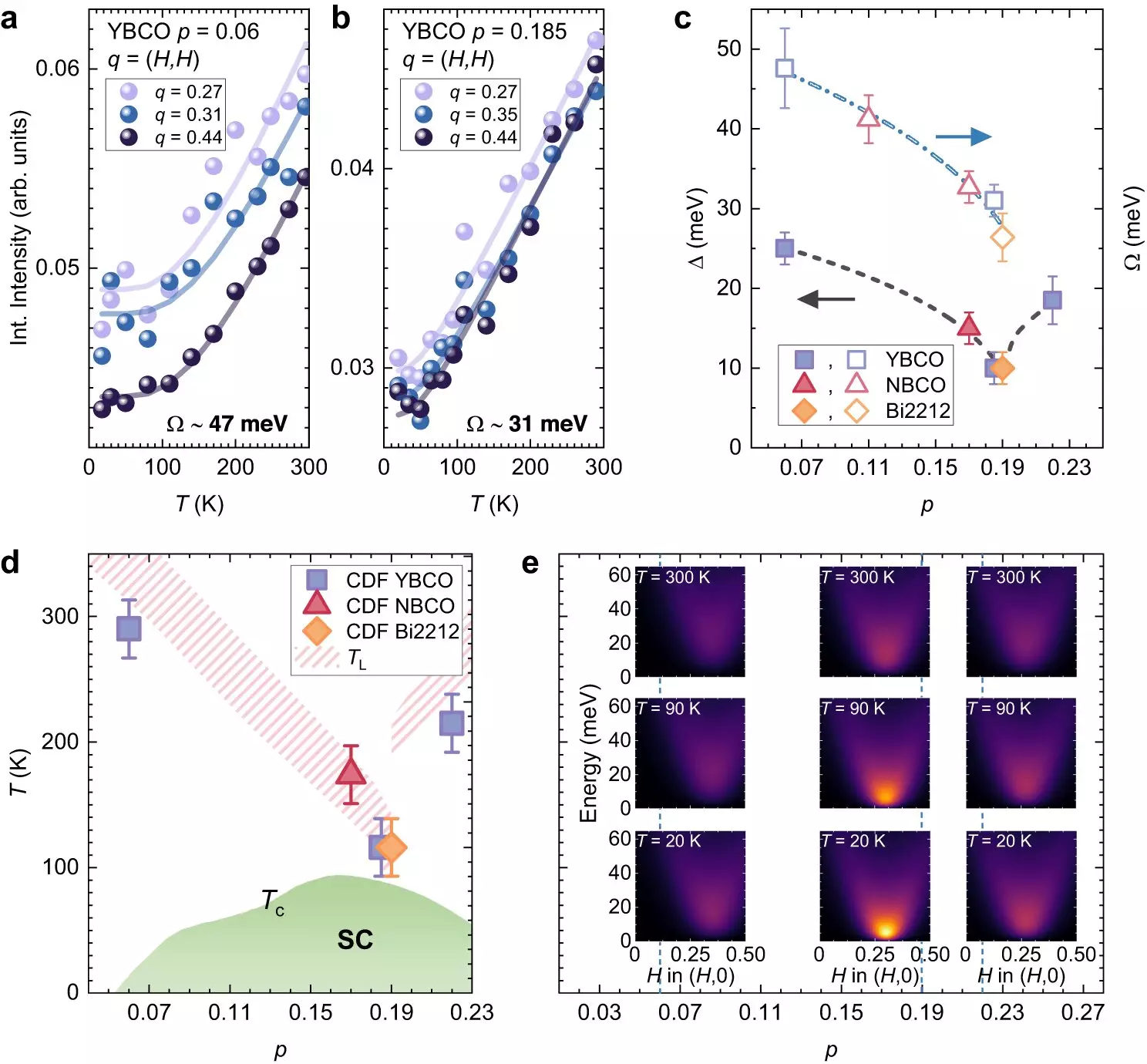In a groundbreaking study published in Nature Communications, researchers from Politecnico di Milano, Chalmers University of Technology, and Sapienza University of Rome have made significant progress in understanding the behavior of high-critical-temperature copper-based superconductors. These materials, even at temperatures above their critical point, exhibit peculiar properties that deviate from those of normal metals. This discovery sheds light on the enigmatic “strange” metal phase and suggests the presence of a quantum critical point, opening doors to sustainable technologies and a more eco-friendly future.
A quantum critical point signifies a specific condition in which a material undergoes a sudden change in its properties due to quantum effects. Just as ice transforms into a liquid at 0°C due to temperature effects on a microscopic scale, cuprate superconductors transition into a “strange” metal phase due to quantum charge fluctuations. Riccardo Arpaia, the study’s lead author and a researcher at the Department of Microtechnology and Nanoscience at Chalmers, explains that these materials exhibit unique electrical resistance behavior, distinct from normal metals, further emphasizing their peculiar nature.
To unravel the mystery of copper-based superconductors, the researchers conducted X-ray scattering experiments at the European Synchrotron ESRF and the British synchrotron DLS. These experiments uncovered the presence of charge density fluctuations that affect the electrical resistance of cuprates, leading to their “strange” behavior. By systematically measuring the variation of energy in these fluctuations, the researchers identified a critical point where the energy is at its minimum: the quantum critical point.
The discovery of the quantum critical point represents a major scientific breakthrough, made possible through over five years of meticulous work. The researchers utilized a technique known as RIXS, primarily developed at Politecnico di Milano, to gather data and conduct numerous measurement campaigns. This extensive effort culminated in the conclusive evidence of the quantum critical point’s existence. With a better understanding of cuprate superconductors, researchers can now explore the design of superior materials with higher critical temperatures, making them more viable for future technologies.
Giacomo Ghiringhelli, the research coordinator and a professor at the Physics Department of Politecnico di Milano, highlights the significance of this breakthrough in the field of superconductivity. Greater insights into cuprate behavior will undoubtedly pave the way for the development of advanced materials with higher critical temperatures, making them easier to utilize in various technological applications. These advancements hold tremendous potential for sustainable technologies, contributing to a more environmentally friendly future.
Sergio Caprara and his colleagues at the Department of Physics of Sapienza University of Rome played a crucial role in developing the theory that assigns charge fluctuations a key role in cuprate superconductors. Their contribution further solidifies the understanding of these materials and will undoubtedly inspire further research to fully comprehend the complexities of superconductivity and potentially enhance its applications.
The recent study on copper-based superconductors marks a significant milestone in superconductivity research. By uncovering the existence of a quantum critical point and elucidating the role of charge fluctuations in the “strange” metal behavior, researchers have provided valuable insights into the behavior of these materials. This breakthrough not only deepens our understanding of cuprate superconductors but also opens up new possibilities for the development of sustainable technologies with higher critical temperatures. As research in this field continues to advance, society may soon reap the benefits of more efficient and environmentally friendly applications in various domains.


Leave a Reply